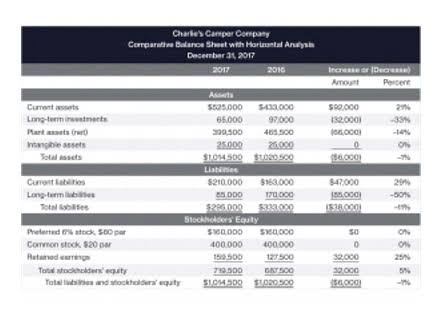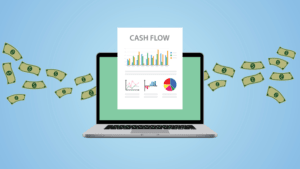
To obtain the proper factor for discounting a bond’s maturity value, use the PV of 1 table and use the same “n” and “i” that you used for discounting the semiannual interest payments. The difference between the 10 future payments of $4,500 each and the present value of $36,500 equals $8,500 ($45,000 minus $36,500). This $8,500 return on an investment of $36,500 gives the investor an 8% annual return compounded semiannually. The factors contained in the PVOA Table represent the present value of a series or stream of $1 amounts occurring at the end of every period for “n” periods discounted by the market interest rate per period.

Effective Interest Rate to Call

14 In general, bond premium arises when a holder acquires a bond for more than the principal amount of the bond. Similarly, bond issuance premium arises when an issuer issues a bond for more than the principal amount of the bond. A holder will purchase, and an issuer will issue, a bond for more than its principal amount when the stated interest rate on the bond is higher than the current market yield for the bond. The bond market experiences fluctuations, leading to bonds being sold above their face value due to reduced interest rates (i.e., a bond premium).
- (4) BOND ISSUANCE PREMIUM IN EXCESS OF QUALIFIED STATED INTEREST — (1) ORDINARY INCOME.
- If the corporation issuing the above bond has an accounting year ending on December 31, the corporation will incur twelve months of interest expense in each of the years that the bonds are outstanding.
- This causes the bond to sell at a price lower than the face value of the bond and the difference is attributable to bond discount.
- However, the interest expense reported in the income statement depends both on the interest paid/payable and the amortization of discount or premium.
- On the other hand, the effective interest rate method will require us to determine the discounted future cash flow of the bond before calculating the rate to apply to the carrying value of bonds payable.
Bond Discount Amortization
Through the process of amortization, this difference is written off against periodic interest receipts. Premium municipal bonds can offer several advantages, including tax benefits and a predictable income stream. However, they also come with unique considerations that require careful analysis and planning. By employing the strategies outlined above and seeking professional advice when necessary, investors can effectively incorporate premium municipal bonds into their broader investment portfolio. Investors should also consider the impact of bond premium amortization on their overall investment strategy. While the tax benefits are clear, they must also weigh these against the potential for higher yields from other investments.
Amortizing Bond Premium with the Effective Interest Rate Method
However, the term “unamortized bond premium” here can also be used amortization of bond premium as a reminder for the company to amortize the bond premium in order to comply with the matching principle of accounting. Under the matching principle of accounting, the bond premium should be amortized over the life of the bond; hence, the term “unamortized bond premium” is used here. Likewise, with the amortization, the balance of the unamortized bond premium will be reduced at each accounting period until it becomes zero at the end of bond maturity.
On the income statement, bond amortization affects the interest expense recognized in each accounting period. The method chosen for amortization—whether it be the Straight-Line Method, Effective Interest Rate Method, or Constant Yield Method—directly influences the amount of interest expense recorded. This expense is a crucial component of a company’s financial performance, as it reflects the cost of borrowing and impacts net income. For instance, using the Effective Interest Rate Method may result in higher interest expenses in the early years of the bond’s life, gradually decreasing over time.
Understanding the Effective Interest Rate to Call Method for Premium and Discount Bonds
In this method, the total premium or discount is divided evenly over the number of days from the bond’s dated date to its final maturity. For callable premium bonds (where the coupon rate is higher than the yield), the stated yield usually assumes the bond will be redeemed at the call date rather than maturity, resulting in a lower yield. An amortized bond is one in which the principal (face value) on the debt is paid down regularly, along with its interest expense over the life of the bond.
- When a bond is purchased at a premium, the taxable interest reported does not simply match the coupon payments received.
- The bond’s total present value of $96,149 is approximately the bond’s market value and issue price.
- When using the effective interest method, the debit amount in the discount on bonds payable is moved to the interest account.
- Enter the full amount of the interest, and then enter the Accrued Interest paid as an adjustment to reduce it.
- This method is a variation of the standard straight-line approach but assumes that the bond will be held to maturity rather than being called.
If you are reporting Interest income on an instrument like a bond that had accrued interest at the time you purchased, then yes, you would reduce your interest income by the accrued interest at your purchase date. Enter the full amount of the interest, and then enter the Accrued Interest paid as an adjustment to reduce it. First, you assets = liabilities + equity can choose to add this to the cost basis of the bond which would reduce gain on the redemption/sale in the future. This entry records $1,000 interest expense on the $100,000 of bonds that were outstanding for one month. Valley collected $5,000 from the bondholders on May 31 as accrued interest and is now returning it to them.


This means that the corporation Bakery Accounting will be required to make semiannual interest payments of $4,500 ($100,000 x 9% x 6/12). The Constant Yield Method, similar to the Effective Interest Rate Method, focuses on maintaining a consistent yield over the bond’s life. This method involves calculating the bond’s yield at issuance and then applying this yield to the bond’s carrying value to determine the interest expense for each period. The primary difference between the Constant Yield Method and the Effective Interest Rate Method lies in the calculation nuances and application specifics. The Constant Yield Method ensures that the bond’s yield remains constant, providing a stable and predictable interest expense pattern.
Always use the market interest rate to discount the bond’s interest payments and maturity amount to their present value. In our example, the bond discount of $3,851 results from the corporation receiving only $96,149 from investors, but having to pay the investors $100,000 on the date that the bond matures. The discount of $3,851 is treated as an additional interest expense over the life of the bonds. When the same amount of bond discount is recorded each year, it is referred to as straight-line amortization. In this example, the straight-line amortization would be $770.20 ($3,851 divided by the 5-year life of the bond).
